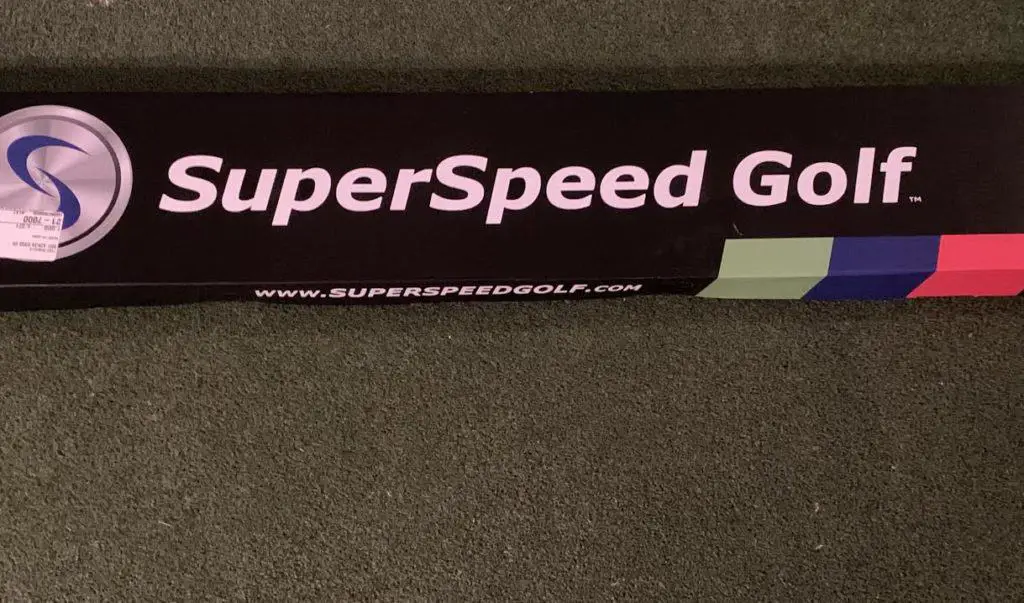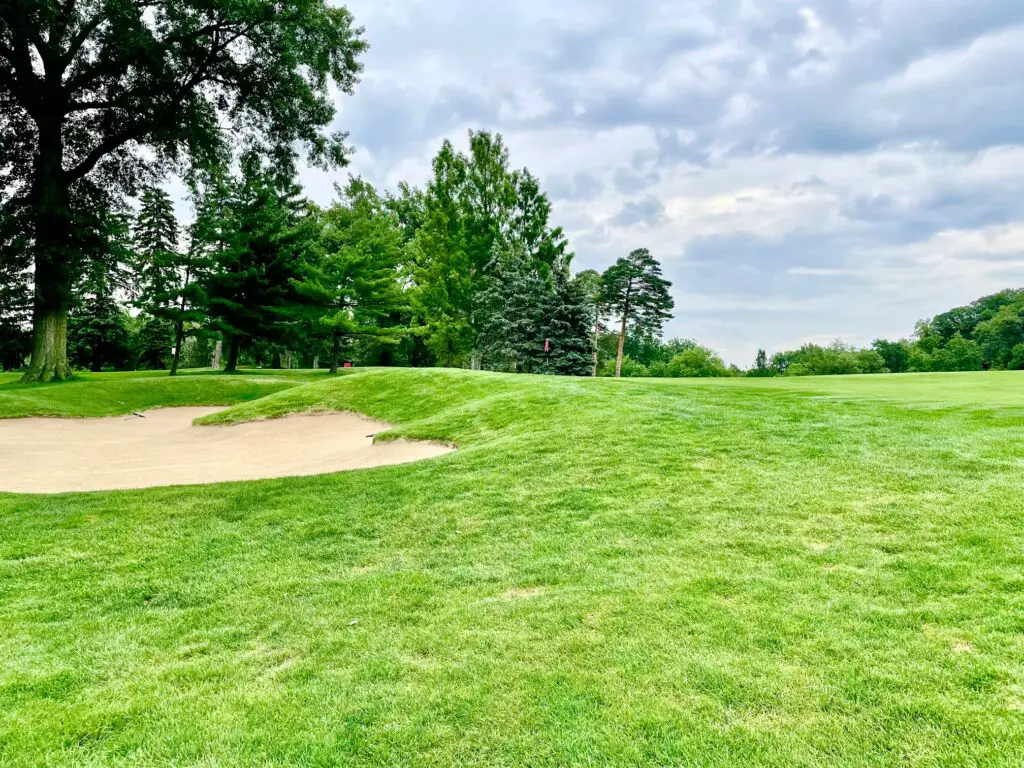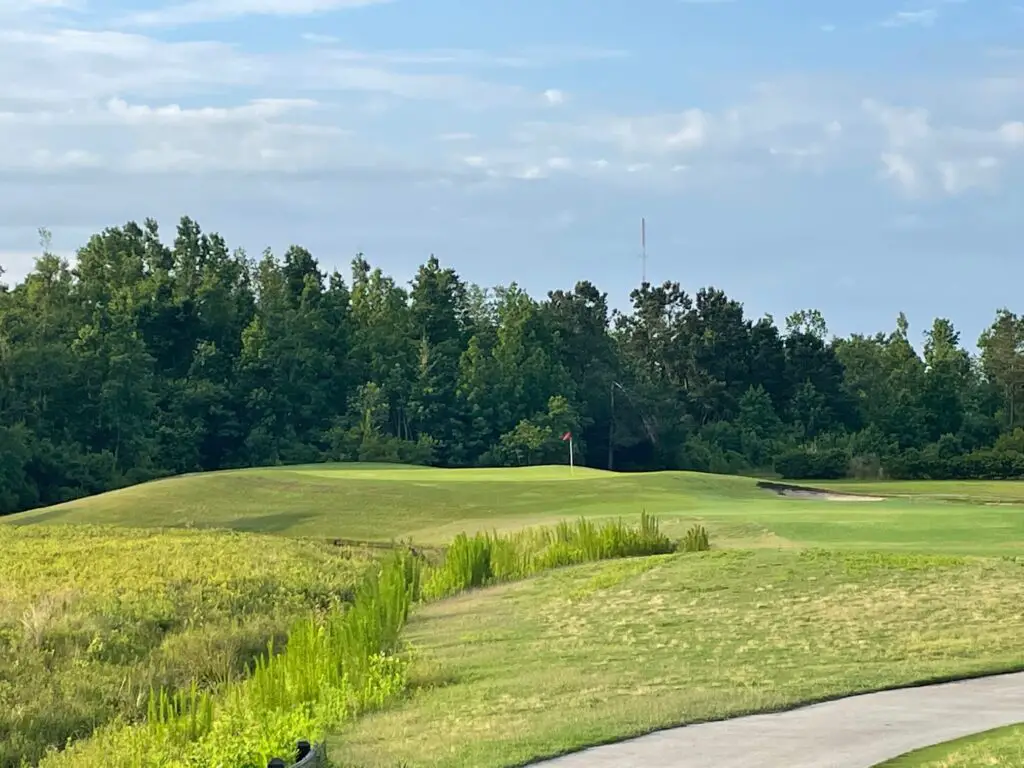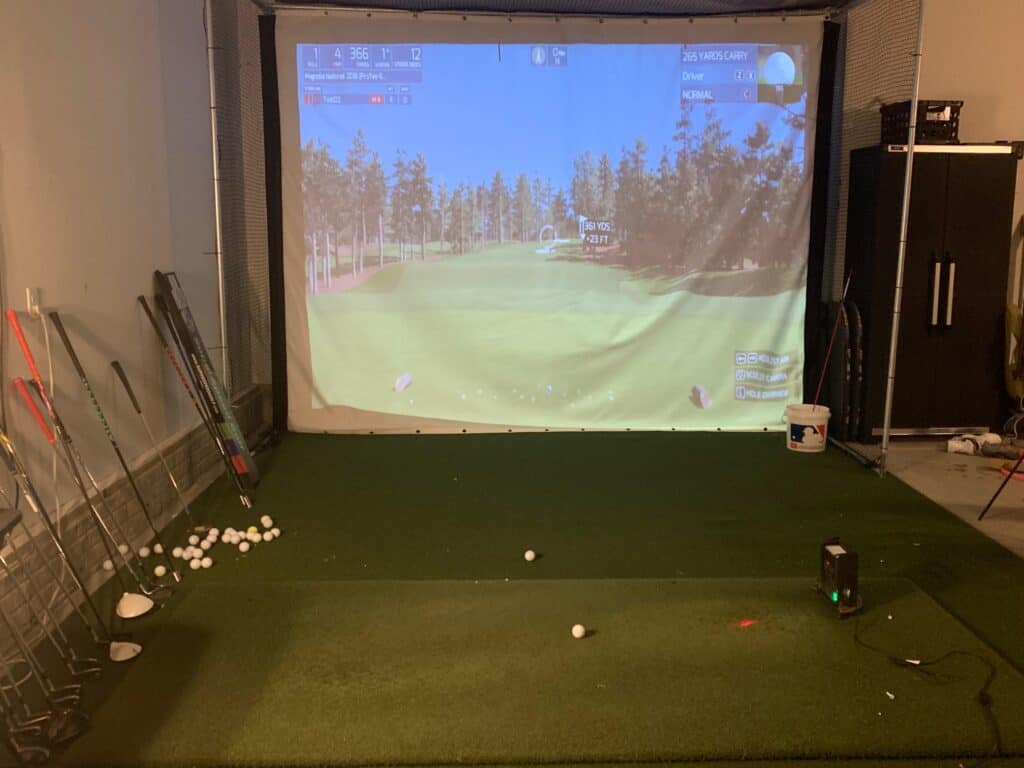We all have days during a golf season where we strike the ball solid, make some putts and play to our level of expectations.
Why can’t we do that more often?
If you ask 100 golfers what they would like out of their golf game, a high percentage will tell you that they want to be more consistent.
Digging deeper into the question they want to hit their better shots more often and make more putts. The end result would be lower scores and a more satisfying experience.
Our formula for playing more consistent golf can be found below! We dive deep into what has helped us in our game and the consistency that we seek. Most importantly, I will give you some action steps to help you play more consistent golf soon!
How To Be More Consistent in Golf?
There are several keys to playing consistent golf. The keys include:
- Improve your ball striking
- Develop a stock shot
- Increase your swing speed
- Understand analytics
- Manage your expectations
- Practice your short game frequently
- Develop your mental game

Key #1: Improve your ball striking
The best and most consistent golfers can strike the ball solid a high percentage of the time. If you compare a 20 handicap to a scratch golfer, you will find that a scratch golfer strikes the ball solid 99% of the time, while a 20 handicap might only strike the ball solid 50% of the time.
Not only does this take distance away from the shot, but on those 125 yard and in shots, a lack of solid contact can leave you with a 40-50 foot putt instead of a reasonable 20 foot putt. The good news is that solid ball striking comes from low point control and we have a drill for you!
Drill #1: The Low Point Control Drill
- Take some yard paint and paint a 1-2 yard long line.
- Setup with 55% of your weight on your front side.
- Try to hit the target side of the line and see how many times out of 10 you can do this successfully!
- Repeat this drill every day for a month, tracking your progress and your ability to do this successfully in trials of ten.
- You may need to start with half swing and progress to full swings.
If you are struggling, put more weight forward and work on keeping your head still to help control the low point in the swing.
Key #2: Develop a stock shot
A stock shot is a go to shot where the golfer is able to control the start line and have a predictable curve of the ball. Whether this is a stock draw or a stock fade, it doesn’t matter. The key is to have a consistent ball flight. While it might be really appealing to hit a draw or fade on demand, the greatest consistency can come from playing one shape time and time again.
I prefer to hit the draw in my game and typically hit a 1-3 yard draw up to a 5-8 yard draw and most of it depends on the shape of the shot that is most ideal, but I don’t force the fade.
Drill #2: Stock Shot Drill
- At the driving range, set up an alignment stick about 6-8 yards in front of you, straight down your target line.
- If you have a second alignment stick, set the stick 3-4 feet right of the first stick (for a draw) or left of the first stick (for a fade).
- Complete your initial assessment to see how many times out of 10 you can start the ball to the right or left of your target. Pick one side and measure your game at this point.
- The goal is to eventually complete this successfully 7 out of 10 times!

Key #3: Increase your swing speed
Speed swing and distance is a vital part to overall consistency. If you are hitting wedges or 8 or 9 irons into greens vs hitting 4 and 5 irons or hybrids, you are going to score better because they are easier to hit on a more consistent basis.
The game of golf has evolved to where speed is important in the game of golf. The faster your swing, the further the ball flies and the more shorter irons or wedges you have into a green.
Training for speed is a great idea and one worth exploring!
If you are going to train for speed, I would highly recommend the SuperSpeed Training System.
Gone are the days of simply being content with the distance you currently hit your golf ball. Many older golfers have proven over the past several years that an increase in swing speed is possible.
There are training systems to help you get your game to the next level and distance is arguably the fastest way to make this happen!
My number one recommendation is to check out SuperSpeed Golf and their protocols to help you find a safe way to increase your swing speed.
I spent many years wondering how I can increase my swing speed. When I was playing junior golf, we weren’t fortunate enough to have some of the training aids and knowledge that is now available. Smart people have studied the golf swing and have created training aids and protocols to help all golfers increase their distance!
At around the same time, the statistics from the PGA Tour have become more clear and the importance of speed is acknowledged by many to be a key to being the best on the PGA Tour.
Within the past several years, there have been several products hit the market to make speed gains possible. While many people for many years waited for the latest driver to come out to gain an additional 5-10 yards, you can now do this even with your current clubs.
Did you know that with the SuperSpeed Training System you can gain 5-8% increase in swing speed as early as the first training session? This would allow you to gain somewhere between 10 and 30 yards depending on your current swing speed.
The SuperSpeed Training System is based on three different swing speed sticks all weighing at different weights. There is a green club that is 10% lighter than the average driver, the blue club which is 5% lighter and the red club which is actually 5% heavier!
Following their prescribed protocols the golfer completes the training every other day. The total time to complete most of their protocols is between 10-15 minutes. Most people can find the time to make this happen. The golfer will also need a swing radar to measure their progress.
The science behind the SuperSpeed Training System is based on overspeed training. Overspeed training has been around for several decades now and has been used by olympic athletics in the sport of Track and Field.
The science behind this overspeed training is based on the premise that your brain will only allow your body to move as fast as it feels it can stop safely! So, you get to work and swing the clubs as fast as possible, retraining your brain to allow you to swing your driver faster.
For more permanent results, the golfer should continue these training protocols for several months. The initial 5-8% is great and can become more permanent with the right length of training. The golfer can expect to continue to break down barriers every several months at a 1-2% increase.
My own experience has been an increase of 7-10 miles per hour on average from between 98-101 all the way up to 106-109. My goal is to hit the PGA Tour average of 113 mph in the coming months. I will continue to train every other day and watch in amazement as I am hitting drivers longer now than ever before!
Phil Mickelson (a senior golfer now) has been known to increase his swing speed in the past year or so and is close to 120 miles per hour in his swing speed. There are potential results for golfers of all ability levels and age!
Check the current price on SuperSpeed Golf System, here!
| Original Swing Speed | After 4-6 Weeks | New Carry Distance | Total Distance |
| 95 | 102 | 245 | 265 |
| 100 | 108 | 259 | 279 |
| 105 | 113 | 271 | 291 |
| 110 | 118 | 283 | 303 |

Key #4: Understand analytics
Did you know that hitting your 3 wood vs your driver isn’t necessary a good idea on more narrow golf holes? The 3 wood for most golfers is 20-30 yards shorter, but is only 7% more accurate. The extra yardage you are giving up for a slight increase in accuracy is hardly worth it.
Instead, hit the driver when possible, unless there is a hazard crossing the fairway or an extremely short or narrow hole.
Also, play to the center of the greens. One of my favorite golf sayings is swing aggressive to conservative spots. Hit a high percentage of greens, give yourself putts in that 10-30 foot range all day and several might just drop in!
I plan on furthering studying the key analytics in the game and playing high percentage golf! Tiger laid the model for this in many of this championships. He rarely made a 6 on a par 5, he kept the ball in play with the driver, and never made more than 3 from 125 yards or less.
What to work on at practice range!
Key #5: Manage your expectations
Too many golfers have unrealistic expectations. Earlier today I played in a four man scramble and on shots from 145 yards, people on our team were expecting us to hit it to 5 feet every time. When in reality, that would be a great shot for a PGA Tour player.
Here are some key stats to keep in mind if you are growing frustrated with your lack of execution. Some of these stats might help put your shots into a better perspective and stop beating yourself up after every shot you hit or every putt you miss!
- The average proximity to the pin from a 100 yard shot in the fairway on the PGA Tour is 18 feet.
- The average proximity to the pin from 125-150 yards from the fairway on the PGA Tour is 23’4”
- The average proximity to the pin from 150-175 yards from the fairway on the PGA Tour is 28’6”
- The average make percentage from 8 feet on the PGA Tour is 50%
Keep these stats in mind the next time you play and maybe you can get less frustrated, which will help your overall enjoyment and most likely your score!
What to do after a bad round of golf!

Key #6: Practice your short game frequently
Having a quality short game is like being able to play quality defense in football or basketball. It should be something you can do each day. If you are seeking consistency in scores, a great short game is the number one way to ensure this. The scrambling rate of the average scratch golfer is 51%.
This means when they miss a green, they can save par 51% of the time. A high handicap amateur golfer might be fortunate to save par even 20% of the time and might actually take 4 or more shots from greenside.
Hitting chip shots inside of 10 feet, giving yourself a chance and never 3 putting is a great way to keep your scores where you want them!
Key #7: Develop your mental game
There are numerous experts on the mental game in golf. Plenty of books have been written and there is some great advice out there! Find a system that works for you and follow it. Be positive with yourself and don’t forget to have a grateful heart while playing.

Next Steps: Take Action and Build Skill
Build the skill in low point control, stock shots and increase your swing speed. These 3 skills are vital to your overall success. We are big believers that golf is built on 3 key fundamentals:
- Low Point Control: This plays a major impact on the quality of the strike. The best golfers are able to control their low point over 99% of the time, while the weakest golfers struggle to control the low point even 50% of the time.
- Start Line and Predictable Curve: The best golfers are able to start their golf ball on the intended start line a high percentage of the time and have confidence that the ball will have a predictable curve (draw or fade). This is often referred to as a stock shot.
- Distance: The golfer must have enough swing speed to play the course.
When you can improve your skill with the full swing, then it comes down to having a sharp short game, understanding the course strategy and having a mental game approach that works for you!
My Secret To Golf Improvement
Let’s face it, in order to get really good at golf, we must practice frequently. About three years ago, I made the leap and invested in a golf simulator build for my garage. I went with a SkyTrak Launch Monitor and the TGC software and can now play over 100,000 courses including Augusta, Pebble Beach, Bethpage Black, Whistling Straits. St. Andrews and many other of the top 100 courses in the world.
This golf simulator setup, which is more affordable that you might imagine, has been a game changer. I can now play golf everyday of the year regardless of rain, snow, cold weather or time of day. I can practice or play rounds of golf. I can stand in the 11th fairway at Augusta and with the auto-rewind feature I am able to practice my approach shots from various differences.
It is worth checking out through Rain or Shine Golf as they offer some incredible packages along with financing offers that are difficult to beat.
Some direct links to Rain or Shine Golf for pricing and financing:

Take Action – What You Can Do Today to Get Better
What does this mean for you? I believe in the following recipe to get better:
1 – Improve your motion in the golf swing by identifying a golf instructor. Here are some options:
Here is a list of golf instructors that we have reviewed:
2 – Train to swing faster and improve your swing speed. Here are some options:
Looking to gain more Speed and Distance in your swing. Two Options:
3 – Understand course strategy and work to break through your next barrier. Here is a series on breaking through:
We have provided guides on how to break 100, 90, 80 and 70. Check out more below, if interested.
4 – Practice Frequently
Did you know that I build a golf simulator in my garage and have played over 500 rounds of golf on my SkyTrak system? It has been a game changer and one worth checking out. Here are some of my other posts on golf simulators frequently asked questions:
- Is a Golf Simulator Worth It?
- How to Build a Golf Simulator?
- What is the Best Golf Simulator?
- Golf Simulator Accessories?
- How to Build a Golf Simulator for under $7000
- Top 11 Reasons to Buy a SkyTrak
- How to Build a Golf Simulator for Under $1000
- Why Build A Golf Simulator?
- What Space is Needed?
- Can A Golf Simulator Improve My Game?
- How Much Does A Golf Simulator Cost?
- Don’t Forget to Check out our 15 best golf swings of all time.
